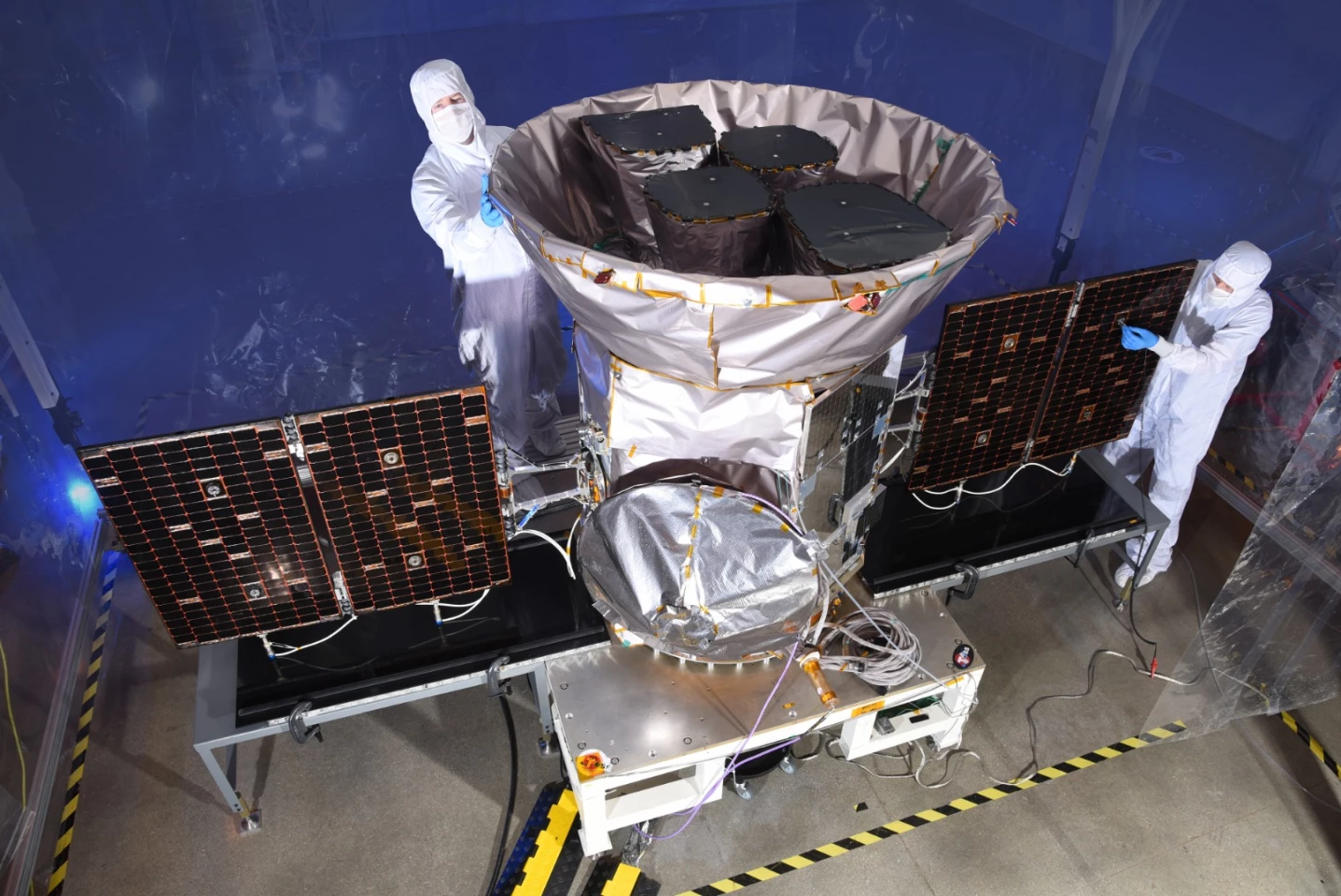NASA's Transiting Exoplanet Survey Satellite (TESS) was built to search for new planets, but astronomers at Ohio State discovered that it could also observe supernovas created by exploding white dwarf stars. This development means we might soon have a better idea about why they explode, and what they leave behind in the process.
The research, led by Ohio State University graduate student Patrick Vallely, culminated in the very first published findings about a supernova observed using TESS, and provides new insights into long-held theories about the elements left behind after a white dwarf star explodes into a supernova.
The classification of supernovae can be confusing. Initially, they were divided into two simple types. Type II had hydrogen in the elemental wake of the explosion (known as the spectra), while Type I did not. Then around the 1980s, it became a bit messier. So for the sake of simplicity and brevity, we'll be talking about Type II and Type Ia (pronounced 1-A).
Type II supernovae are those where a massive star (with a mass of around eight-times our Sun or more), at the end of its life, collapses in on itself and – boom. Type Ia involves smaller stars in close binary systems (where two stars orbit one another) where at least one is a white dwarf.
So what's a white dwarf? A white dwarf is a dying star which has burned off all of its fuel (usually with just carbon and oxygen remaining), but is still very, very hot. It's also very, very dense (imagine the mass of our Sun, compressed into the size of the Earth). Left to its own devices with no nearby stars to pinch matter and energy from, a white dwarf will eventually cool down into a lump of black carbon. And when they say eventually, they mean a billion years or so.
However, when a white dwarf is in a close binary system with another star, it can have a far more dramatic end. Given the right set of conditions, this scenario can result in a Type Ia supernova. This occurs when the white dwarf steals mass and energy from its stellar dance partner, grows too big to remain stable, and eventually explodes, taking them both out. That's the theory anyway.

While a white dwarf has no remaining hydrogen, its companion star usually would, which means that there ought to be hydrogen (and other stuff) in the spectra. Until now though, scientists have never seen it. The observation made by TESS, changed everything.
Usually, detectable hydrogen in the spectra would imply that this was a collision between a white dwarf (no hydrogen) and a star that wasn't so long-in-the-tooth (with plenty of hydrogen). But mysteriously, analysis of the light curve from this supernova suggested that this was in fact, a collision between two white dwarfs. In this scenario, there really shouldn't be any hydrogen in the spectra, so where did it come from?
According to co-author on the paper, Professor Kris Stanek, it's likely the hydrogen came from a third-party cutting in on the binary system's dance of destruction. Even in the far reaches of space, the notion of two's company, three's a crowd seems to apply.
"Based on the light curve, the most likely thing that happened, we think, is that the hydrogen might be coming from a third star in the system," says Stanek. "So the prevailing scenario, at least at Ohio State right now, is that the way to make a Type Ia supernova is by having two white dwarf stars interacting – colliding even. But also having a third star that provides the hydrogen."

The data from TESS was combined with data from the All-Sky Automated Survey for Supernovae (ASAS-SN), an earth-based network made up of small telescopes around the world looking out for supernovae in galaxies far, far-away. This data was further combined with data from the South African Large Telescope (SALT) to evaluate the elements left behind in the supernova's spectra. Finding both hydrogen and helium – indicators that the exploding dwarf had consumed a nearby companion non-dwarf star – was in contradiction to the two-dwarf collision suggested by the light curve. That was until the idea of a third star was raised by Stanek.
"These [Type Ia] are the most famous type of supernova – they led to dark energy being discovered in the 1990s," says Vallely. "They're responsible for the existence of so many elements in the universe. But we don't really understand the physics behind them that well. And that's what I really like about combining TESS and ASAS-SN here, that we can build up this data and use it to figure out a little more about these supernovae."
Scientists generally concur that white dwarf supernovas require companion stars, but the mechanisms of the explosions, as well as the makeup of the companion stars, are less clear. These findings are a big, first step towards answering these questions.
A paper on the research is available to view in the journal Monthly Notices of the Royal Astronomical Society.
Source: Ohio State University






